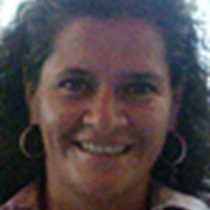Santiago Island
Our pre-breakfast early morning outing took place at Espumilla Beach on Santiago Island, also known as James or San Salvador Island. We have come back to the central part of the archipelago. We started our walk along the beach area; this place offers us the opportunity to enjoy beautiful mangrove forests protecting many Pacific green sea turtles nests. These reptiles have already finished the nesting season for this year.
In this specific site, the mangroves act as a natural barrier that keeps a brackish water lagoon ecosystem apart from the ocean. In the lagoon we found several waders, Bahamas white chick pintail ducks and a couple of whimbrels were seen feeding in the early hours of the day. As we headed up into the woods we found an incredibly old forest of Palo Santo trees that are magnificent in size; some of these trees are three to four feet in diameter and maybe up to 24-feet tall. The trees in this location are among the oldest ones you can see at the visitors’ sites. It is wonderful to realize that these giants were here way before us. Palo Santos this big can only be found in this place. As we walked around we could also hear the singing of many birds, like warblers, finches, mockingbirds and flycatchers.
Snorkeling, kayaking and glass-bottom boat outings along the coast of Buccaneer Cove were both interesting and fun. It was great to be anchored at the very same place where the HMS Beagle stopped to drop Charles Darwin on the island. Darwin spent nine days on Santiago Island exploring this specific site. Today we know that young Darwin was particularly interested in the lichens he found on the vegetation here.
In the afternoon we motored around the northwestern side of Santiago and disembarked at a location known as Puerto Egas. This place was known to be a site where humans tried to colonize this island on more than one occasion. Some guests opted to stay at the black volcanic sand beach where they spent the afternoon snorkeling and swimming. Some other guests went for an interesting hike along the coast where we found beautiful lava formations known as grottos. These unusual geological formations have become the perfect habitat for a colony of Galápagos fur seals. The latter are the second species of pinnipeds found in the archipelago. In opposition to the Galápagos sea lions that were brought here by the Panamic flow, these furry relatives were helped to arrive here by the strong Humboldt Current.
What a beautiful afternoon we had—different species of shorebirds, lots of marine iguanas, baby sea lions learning to fish, American oystercatchers, and much more, kept us looking everywhere… As we walked back to the ship at sunset we could only hope that this place remains as it is—not only for us in the future to admire but for the creatures that have made it here and well deserve to own it!




